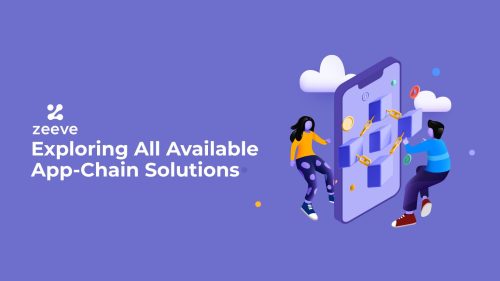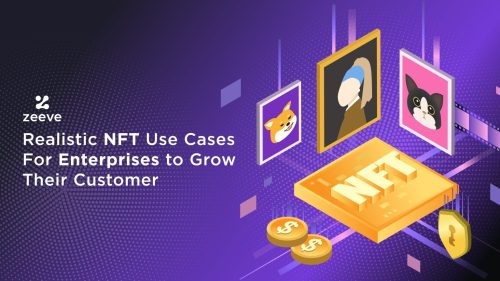
Monitoring and management of blockchain networks
Since blockchain’s inception in 2008, billions of dollars worth of investment have gone into developing applications and perfecting this disruptive technology. Blockchains’ far-reaching impact and their cutting-edge individualistic characteristics of immutability, transparency and security set them apart from its predeceasing technologies. Counting in the multiple applications of blockchain in various economy-driven sectors and problem-solving, it’s safe to say that it is “the sustainable technology of the future”. However, speaking of sustainment, like every other technology, security remains a concern for blockchain investors. The sudden spurt of crypto-based crimes has accelerated the need to enhance security systems in blockchain networks.
Blockchain vulnerabilities, hackers’ delight: A new wave of cryptocurrency crimes
When Bengaluru (India) police arrested a wanted computer hacker who was guilty of several hacking crimes, they were in for a surprise when he claimed that he, apart from a US-based couple, was involved in the infamous 2015 Bitfinex heist where an astronomical amount of bitcoins were reported stolen. Although his claims of involvement are yet to be proven, this particular incident threw a very pressing and relevant question in the crypto enthusiast’s way worldwide – How safe and reliant is blockchain technology as it claims to be?

How do blockchains work?
Blockchain is a programmed database that uses cryptography to store information. It is a decentralized and tangible network made up of multiple interconnected nodes that work in tandem to execute transactions and validate data. A blockchain enthuses trust between untrusting parties through immutability. This means multiple participating nodes verify data using various consensus mechanisms. The verified data-block is then added to the network, which is tamper-proof with a unique cryptographic signature. Thus the validated block becomes immutable due to it being time-stamped and an omnipresent record. Apart from being tamper-resistant, consistency between nodes, the blockchain’s ability to evade DDoS (distributed denial of service) attacks, double-spending attacks, 51% or majority consensus attacks and anonymity factors lend credibility and inherent additional layers of security to the blockchain systems.
Blockchain monitoring and management framework
In a blockchain network, transactions are validated by a group of nodes. As blockchain nodes play a fundamental role in the network, therefore their monitoring is crucial for the blockchain’s health. Hence, a capable framework is required for monitoring and management purposes that enable data assimilation and integration and provide an efficient graphic visualization of blockchain metrics for either one node or an entire network.
Another component that needs extensive monitoring is the DApp layer which comprises the user interface, API (application programming interface), SDK (software development kit) and data storage. Monitoring the DApp layer is crucial as it enables interaction with blockchain nodes.
Why do we need monitoring and managing of blockchains: The vulnerable areas for blockchain attacks
Even with the benign presence of the blockchains mentioned above in place, hackers still manage to find loopholes putting a massive spotlight on the vulnerabilities of distributed ledger networks. Various heists and security breaches into the systems have proven that constant monitoring and managing is not an option – it’s vital for the sustainment of the blockchain networks. In hindsight, there are five main focal points of blockchain attacks.
- Attacks on blockchain networks
In a peer organization such as blockchains, nodes play a starring role in the functionalities of the DLT networks. So no wonder they become the number one target of phishing incidents. The types of attacks that fall under this category are as follows.
- DDoS attacks: Denial-of-service attack is a type of attack that an individual or group carries out to disrupt the services of a host connected to the internet. Through DoS, hackers usually target the application layer of a blockchain and disconnect services such as access to wallets, mining pools, crypto platforms, etc., from users. They do so by overflowing a node with superficial requests keeping users from the intended usage.
- Transaction-based or double-spending attacks: The hackers try to change transaction IDs by changing the hash and broadcasting the altered ID to the network, and getting it validated through consensus. If they succeed, they have basically tricked the sender into believing the transaction has failed even though the funds have been debited during the original verification. So the sender again sends the funds straight to the hacker’s account.
- 51% attack: Also known as majority consensus, a hack can occur if a hacker somehow is able to access and control 51% aka the majority of the network’s mining hash rate and create a hard fork rate, as it happened in the case of classic Ethereum when it got subjected to consensus attack in 2020.
- Timejacking attack: In this type of attack, hackers reroute nodes to an alternative blockchain by changing the time counter of the node on a particular network
- Crypto wallets attacks
By finding vulnerabilities in cryptographic algorithms, hackers try to attack both cold and hot wallets by either attempting phishing, which is the most common form of attack or initiating dictionary attacks by breaking a cryptographic hash.
- Smart contracts attacks
Hackers try to alienate weak sports in the source code in a smart contract. For instance, Ethereum smart contracts running on solidity code are prone to reentrancy attacks. Additionally, EVM vulnerabilities such as immutable codes of smart contracts, which, if leveraged, can lead to a fork or crypto theft. The famous DAO attack happened when a hacker found a defect in the smart code and stole $3.6 million worth of Ether. Missed modifier bugs and short address/parameter attacks are hacks that target faulty codes to gain access to the functionalities of smart contracts.
- Mining pool attacks
Often miners, especially in the case of bitcoin miners, put their resources together to create jointly-owned mining pools for increased awards. However, miners with nefarious intent advertently exploit and manipulate consensus mechanisms to increase their profit share by resorting to activities like selfish mining and block withholding.
- Sybil and Routing attacks:
Sybil attack is when an individual controls two or more points or nodes in a network. Through Routing attacks, hackers create some sort of fork within a network forcing the creation of a parallel blockchain. In such a case, nodes within one fork or component are unable to communicate with the other node within another fork. This way, hackers create delays in block delivery.
The hacks, as mentioned above, can disrupt the security of blockchain networks causing massive monetary losses to the investors. Therefore constant and rigorous vigilance of blockchains by analysis software companies must be their priority. The following are the core monitoring principles that all blockchain companies should implement.
- Constant vigilance: Look out for suspicious activities following certain out-of-place events that may or not be hostile. Instances such as failed login attempts, rise in transaction failure, unforeseen spikes or dips in transaction volume, transactions time-stamped outside of business hours, and increased unauthorized users warrant thorough investigation.
- Building multi-layer security systems: Although blockchains at heart are trustworthy institutions, nothing is impenetrable in the internet world. Given the sheer size of the network and volume of transactions, blockchain security providers must look to develop security systems that are capable of issuing real-time security alerts when detecting anomalies in the network to save time and effort in pinpointing loopholes in systems.
- Develop auditable records of data: To better understand information on blockchain for auditing purposes, it is feasible to use tools that collect viable data cost-efficiently and in a timely manner.
- A visual representation of blockchain data: In order to monitor blockchain activities effectively, it makes sense to have a visual or graphical depiction to get a concise analysis of blockchain data.
- A visual representation of blockchain data: In order to monitor blockchain activities effectively, it makes sense to have a visual or graphical depiction to get a concise analysis of blockchain data.
- Blockchain third-party dashboards: Whether you seek real-time data reports, monitor node’s health, access and track transactions or validate transaction’s sanctity, development and access to such dashboards can considerably help with blockchain management.
Countering crypto attacks with blockchain analysis tools
Investors lost around $14 billion worth of crypto assets to various thefts, frauds, and scams in 2021. With wide-ranging possibilities of cyber-attacks on blockchain systems monitoring blockchains has become the priority to retain investors’ trust. Therefore, there is a need for blockchain analysis tools which are exclusive software that monitors, manages and analyses and provides a visual representation of blockchain applications while keeping a check on all its activities to fish out unlawful ones.
What is blockchain analysis?
Blockchain analysis is a process that analyzes and monitors blockchain elements such as blockchain addresses and transactions to track behavioral patterns of various network participants. It is imperative for blockchain-dependent organizations to use blockchain analytics software to maintain compliance and avoid any vulnerability to illegal actors. These softwares are the need of the hour as they help tackle crypto-based crimes, manage associated risks, and implement regulatory compliance. Their most popular applications are Anti-money Laundering (AML) and Know-Your-Customer (KYC), with a core use case of transaction tracking back to the point of origins while underpinning fraudulent ones.
Blockchain analysis software comprises of following functionalities:
- Address classification: The most commonly used tool connects physical-world identities to the blockchain address. These softwares are also the most indispensable tools to make sense of identity analysis. They are the phase one of the blockchain analysis
- Transaction tracking and risk assessment tools: Next in line are the tools that keep track of all institutional transactions and access risks based on the fund’s inception, movement and senders/receiver’s history while duly assigning a risk score to every transaction
- Investigation compliance tools: The third phase requires investigation software that provides visualization tools for the manual investigation of blockchain addresses and transactions. At this point, graph visualization has a vital role in investigating compliance with transaction representation
How do these analysis tools monitor blockchains?
There are various techniques and tactics to understand the nature of the threat and nip it at its bud.
- Web Scraping to analyze data from crypto market sources and track changes in prices and safehold extracted data so one can promptly react when prices reach the brink
- Clustering algorithms to identify blockchain entities
- Scam database monitoring
- Dust attacks (a hack in which scammers send a minuscule amount of tokens to targeted accounts and access transactional activity of that particular wallet. After a dedicated analysis, hackers try to deanonymize the wallets owner’s identity)
Why is blockchain analysis software required, and what are their use cases
Companies use Regulatory Technology, commonly known as RegTech, to adhere to the set regulatory norms and blockchain analysis tools help achieve those. The idea is that these tools help mitigate risks and ensure that the blockchain networks comply with regulatory norms.
The following are the most popular use cases of analysis tools.
- Compliance: Blockchain service providers avail analysis software services providing risk minimisation and monitoring tools to ensure AML/CFT compliance. These tools aim to keep fraudsters from using blockchain-based services. The software helps companies keep up with the regulatory terms and standards as per their jurisdictions. These tools track every transaction and access risks associated with it, thus curtailing fraudulent activities.
- Investigations and surveillance: Blockchain analysis solutions have a key role in investigations of crypto-based crimes. However, a lot depends on how meticulously KYC has been implemented by any blockchain service provider, which would further help identify scammers. Additionally, a robust visualization tool can help with manual surveillance by using various clustering solutions.
- Money tracking: There is an ocean of money flowing through blockchain platforms, and tracking every movement is not an easy task. Money tracking software helps segregate genuine transactions from false ones and enforce risk assessment.
To conclude
The crypto crime ratio is in direct proportion to the growth of blockchain platforms. Therefore it is vital to monitor and manage blockchains with the help of blockchain analysis software. There is an unprecedented demand for this technology, which has skyrocketed over recent years. And who better than Zeeve, a leading name in blockchain development and management to provide optimum tools to protect businesses’ interests. Our advanced integrated system is especially designed to keep criminals out of systems while safeguarding the assets of genuine users. Additionally, analytics tools also help government authorities nab crypto fraudsters, as we have seen in the case of Bifinex theft and many other such cases.





Responses